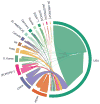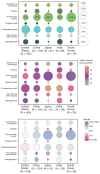Visualizing detailed postdoctoral employment trends using a new career outcome taxonomy
- PMID: 29334368
- PMCID: PMC5872819
- DOI: 10.1038/nbt.4059
Visualizing detailed postdoctoral employment trends using a new career outcome taxonomy
Abstract
A standard taxonomy and visualization methods can provide postdoctoral scholars with tools to critically evaluate their career prospects.
Conflict of interest statement
The authors declare no competing financial interests.
Figures






References
-
- Cyranoski D, Gilbert N, Ledford H, Nayar A, Yahia M. Nature. 2011;472:276–279. - PubMed
-
- National Science Foundation, National Center for Science and Engineering Statistics. Doctorate Recipients from US Universities: 2014. National Science Foundation; Arlington: 2015. NSF Special Report 16–300.
-
- Institute of Medicine, National Academy of Sciences, and National Academy of Engineering. Enhancing the Postdoctoral Experience for Scientists and Engineers: a Guide for Postdoctoral Scholars, Advisers, Institutions, Funding Organizations, and Disciplinary Societies. The National Academies Press; Washington, D.C: 2000. - DOI - PubMed
-
- Allum J, Kent J, McCarthy M. Understanding PhD Career Pathways for Program Improvement: a CGS Report. Council of Graduate Schools; Washington: 2014.
Publication types
Grants and funding
LinkOut - more resources
Full Text Sources
Other Literature Sources

